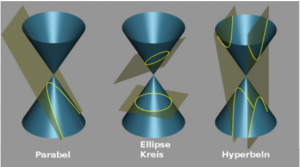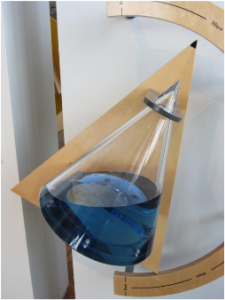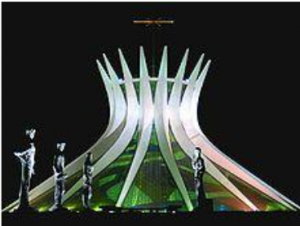Cone Sections
A cone section is a plane curve that results when the surface of a double circular cone is intersected with a plane (cf. Figure 1).
The double circular cone is created by rotating a straight line ![]() around an intersecting axis
around an intersecting axis ![]() The mantle of the cone then consists of the totality of all straight lines (the so-called surface lines) that result from the very rotation of
The mantle of the cone then consists of the totality of all straight lines (the so-called surface lines) that result from the very rotation of ![]() around
around ![]() The position of the intersection surface in relation to the lateral surfaces determines which conic section is created.
The position of the intersection surface in relation to the lateral surfaces determines which conic section is created.




![Rendered by QuickLaTeX.com \[\begin{pmatrix} x & y & 1\end{pmatrix}\begin{pmatrix} a & b & d\\ b & c & e\\ d & e & f\end{pmatrix}\begin{pmatrix} x\\ y\\ 1\end{pmatrix}=0\quad (\ast).\]](https://erlebnisland-mathematik.de/wp-content/ql-cache/quicklatex.com-47a548f147cb62b04313466417891c01_l3.png)
